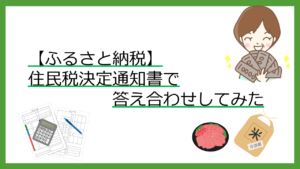Hello, I am MAY.
This post will be based on the post published in Japanese by JUN. I am going to write about ways to save money for the future of your children in Japan.
I will introduce three modalities that you can use to save money for your child’s future: Gakushi Hoken, Bank Savings, and Investment (Junior NISA).
- Gakushi Hoken
- Bank Savings
- Junior NISA
(Index funding investment)
Gakushi Hoken
Gakushi Hoken is an insurance policy that you take out with an insurance company to guarantee your child’s studies. Every month you will contribute an amount determined by you together with the insurance company, and in the future the insurance company will repay this amount in four installments. The first installment your child will receive at age 18, then at ages 19, 20, 21. And there will also be an add-on, which is a percentage of the interest accrued during that year.
Gakushi Hoken also works like a life insurance policy for the parents. In case the parents pass away, your child will receive this determined amount in the future.
Bank Savings
If you have no interest in insurance or investments, one option would be to leave the money in savings or even in a current account that bears interest. There are digital banks that can offer a higher percentage of interest (the highest I could find was 0.2%, e.g. Aozora Bank) because they are digital and have no physical stores. Although the interest is very low, it still pays a little something effortlessly, and you can withdraw the money at any time.
Investment (Junior NISA)
The Junior NISA is a way for you to invest for our children and be tax-free. The Japanese government implemented the NISA program to encourage people to invest more. However, many parents were afraid to invest and only be able to redeem the money when their child reaches the age of majority. Maybe to attract more parents, the Junior NISA will have its program closed in 2023, so parents can have the option to withdraw the money after 2024, or leave it invested until their child turns 18.
To start investing in Junior NISA you need to open an account in a broker (e.g. SBI Securities, Rakuten Securities) in your child’s name. It is a bit bureaucratic, but the end result is encouraging.
Comparative table
| Name | Capital (JPY) | Capital appreciation (JPY) | Capital gain (JPY) |
|---|---|---|---|
| Gakushi Hoken 10%* in 18 years | 2,400,000 | 2,640,000 | 240,000 |
| Bank Savings 0,2% p.y. | 2,400,000 | 2,487,884 | 87,884 |
| Junior NISA (For index fund investments) 5%** p.y. |
2,400,000 | 5,505,209 | 3,375,886 |
**I underestimated the interest rates that could be around 6 or 7% depending on the investment you choose.
Final Remarks
Investing through junior NISA seems much more attractive, doesn’t it? However, every investment has a risk, and as the brokers say “the greater the return, the greater the risk”. Please, since we are dealing with the future of our beloved children, always study the options thoroughly.
Remember that Gakushi Hoken is also insurance and can be precious in unexpected moments. Since it is insurance, the amount is guaranteed for your child if you pass away. Through investments, however, only the accumulated amount is guaranteed.
What I wanted to show in this post are some options that we have to save money for our children’s future. I didn’t look for exact interest rates, but with these estimates we can have an idea of our options, right?
I hope I have helped in some way. See you next time!
(2) Study the subject and draw your own conclusion.
(3) I used the capital example of 2,400,000 JPY. But of course, this value can be less. It depends on what the parents decide to contribute.






コメント